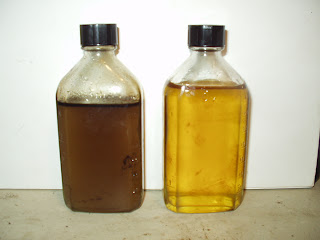As the century began, the province's oilsands were simply seen as an engineering marvel.
And things got nasty at the 2008 World Petroleum Congress in Madrid.
"The negative attention, or black eye, was foisted on the oilsands, I think unfairly," he said.
Greenpeace's attention-getting "Stop the Tarsands" campaign aims to halt further projects.
I just read this article published on Jan. 2,2010 at Calgary Herald. Please note that this is not my article. Calgary herald has the copyright of the article. I am citing it just for reading! If anybody thinks it is not proper to cite the article in this way, please let me know and then I will remove it.
I do not know what the author is trying to say. SAGD technology is there at least more than 10 years(I am not sure how many years exactly), but the article says it is promising new technology!
I do not know what the author is trying to say. SAGD technology is there at least more than 10 years(I am not sure how many years exactly), but the article says it is promising new technology!

